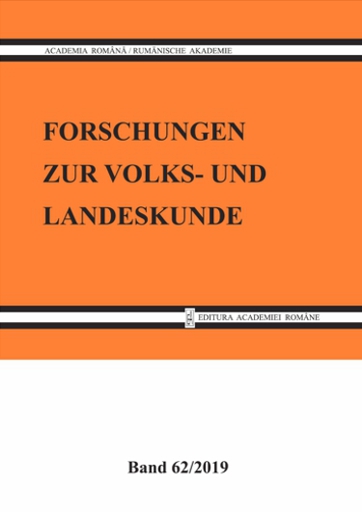Das deutsche Kapital im Bergbau und in der Metallindustrie Zentraleuropas nach dem Ersten Weltkrieg (1919–1929). Spezifische Aspekte deutscher Investitionen in der Industrie Rumäniens (Siebenbürgens)
German Capital in the Mining and Metallurgical Industry of Central Europe after the First World War (1919–1929). Specific Aspects Concerning German Industrial Investments in Romania (Transylvania)
Author(s): Lajos BáthorySubject(s): History, Economy, Recent History (1900 till today)
Published by: Editura Academiei Române
Keywords: German capital; Central Europe; Interwar;
Summary/Abstract: Before the First World War the Austro-Hungarian and the German financial capital held overwhelming positions in the Austro-Hungarian Empire and in the Polish territories. During the war the German capital strengthened its influence in the newly occupied Polish countryside. Moreover, the German army occupied southern Romania and forced the Romanian lignite mining firms to transfer the administration into German hands, thus managing to control 80% of the fuel output in Muntenia. After losing the war, Germany was obliged to accept the Versailles Peace Treaty that provided with the possibility of winding up German owned companies in the newly born successor states in Central Europe. But only in Greater Romania the government acted quickly to award the former owners the property of the lignite firms. In Transylvania, the largest gold-mining company in Europe owned by German investors was put under distraint and obliged to sell shares to the large Romanian company “Mica”. But in Poland great German companies continued to rule over the iron and coal industry in Upper Silesia and Dombrowa, as well as in the nonferrous metallurgy, until the late 20s. Nevertheless, at the right moment the Polish government obliged the German stockholders to transfer the shares to the autochthonous enterprises. But the American capital played an outstanding role in the takeover of the capital from the German investors, especially the Harriman Business Center from USA. In other countries the German capital strengthened its positions, especially in Austria, where the greatest iron-and-steel company, Alpine Montangesellschaft, was gradually controlled by Vereinigte Stahlwerke Düsseldorf corporation. The headquarter of another large German company was also located in Düsseldorf, Mannesmannröhren-Werke, which acquired a quarter of the capital of the great Czechoslovak iron producer, Prager Eisenindustry Gesellschaft. German firms had important partnerships in the large lignite exploitations in Czechoslovakia as well. In Hungary, the German capital attempt of penetration was limited to the bauxite mining and exportation of the ore to Germany. In Romania, after a temporary decline, the German businessmen strengthened again their partnerships. The most important company with German domination was “România Carboniferă”, an outstanding lignite producer in Transylvania. But the most intrepid German company in Romania was Julius Berger Tiefbohr A.G. which managed only occasionally to close transitory partnerships and deals in coal mining but persisted in trying.
Journal: Forschungen zur Volks- und Landeskunde
- Issue Year: 2019
- Issue No: 62
- Page Range: 117-128
- Page Count: 12
- Language: German
- Content File-PDF

